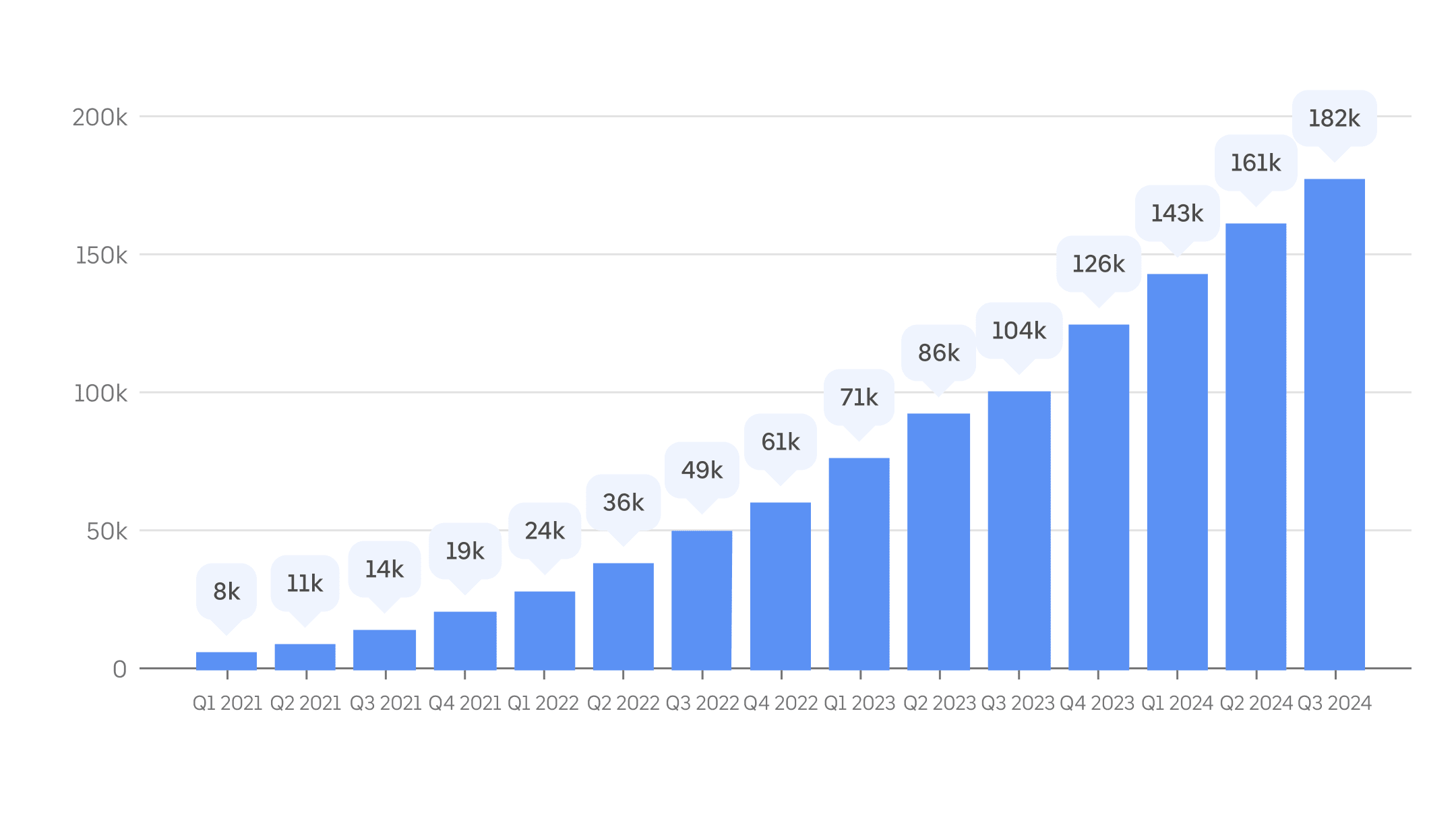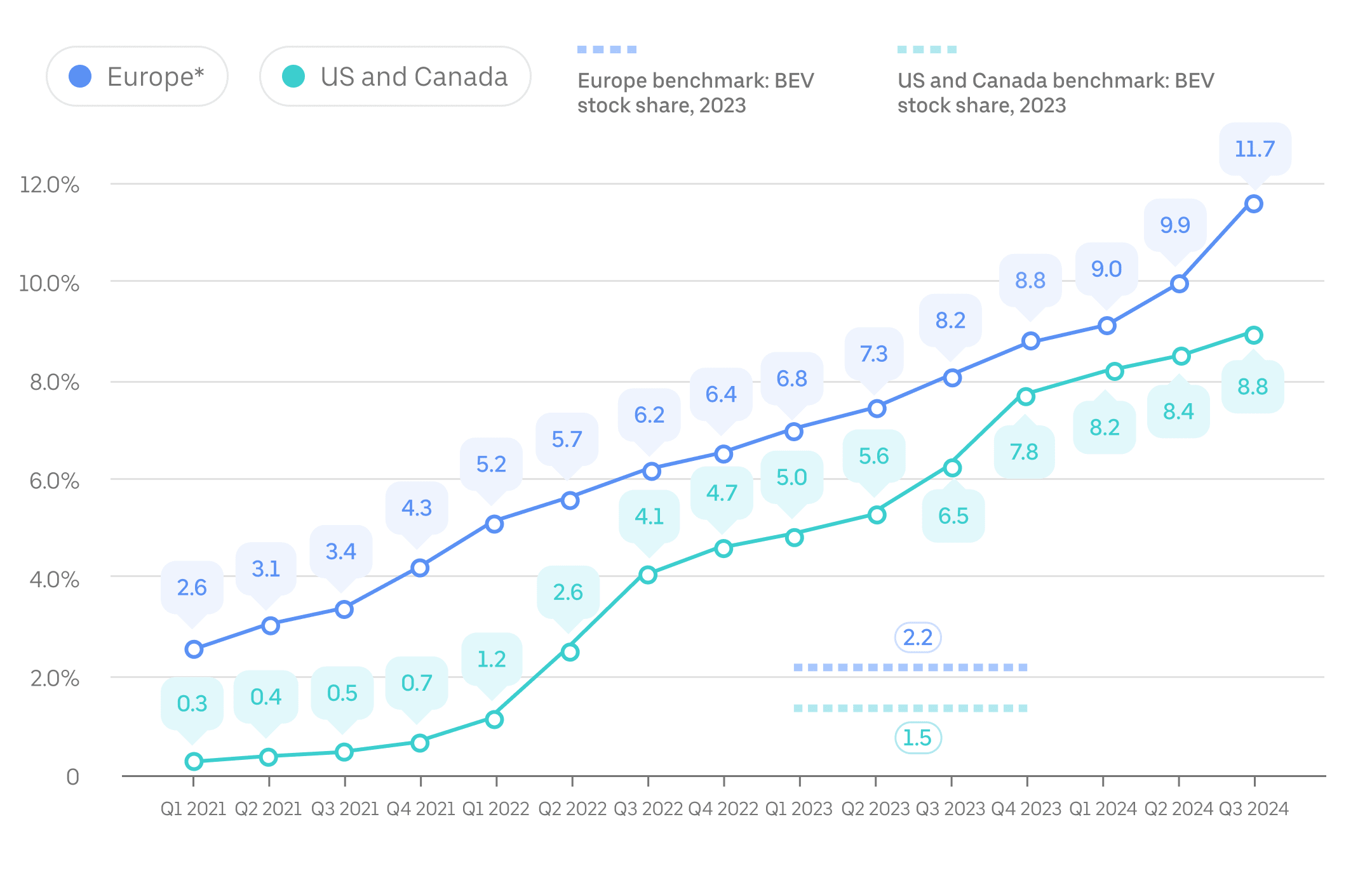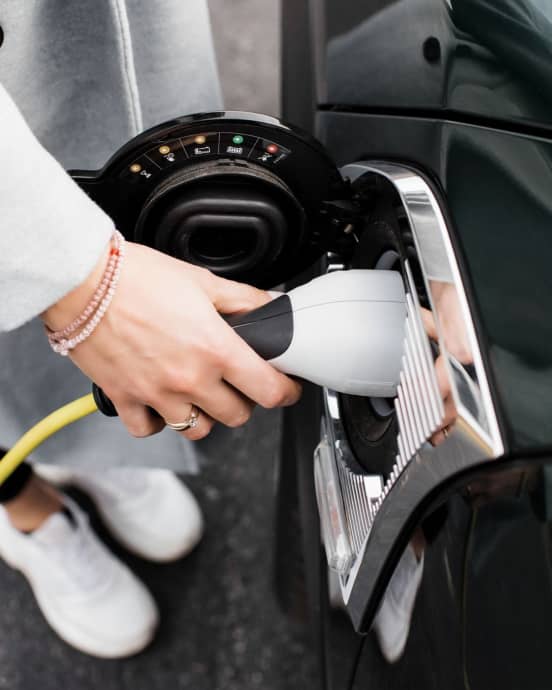Отчет Uber о воздействии на климат
The environmental impact of trips served by Uber’s platform matters. It’s our responsibility to measure that impact by evaluating data gathered from the real-world use of Uber, share the results publicly for greater transparency, and act to improve our climate performance.
November 2024 update: This page includes metrics for trips completed on Uber by internal combustion engine (ICE) vehicles and zero-emission vehicles (ZEVs, such as battery EVs) from the beginning of the first quarter of 2021 to the end of the third quarter of 2024. Note that the scope of this report includes only Uber’s Mobility business (ridesharing).
«Переход к нулевому уровню выбросов требует от компаний прозрачности и подотчетности на любом отрезке этого долгого пути. Uber гордится тем, что является первой платформой для совместных поездок, которая предоставляет точные данные о выбросах, связанных с использованием наших продуктов».
Дара Хосровшахи, генеральный директор Uber
Водители автомобилей ZEV
Globally, about 182,000 ZEV drivers a month, on average, actively used Uber’s app in Q3 2024. That’s 75% more than the same period a year earlier and 13 times the figure from the same period 3 years ago.

Metric: Average monthly active ZEV drivers on Uber, by quarter, since Q1 2021, the start of the first full calendar year after announcing our sustainability goals. Drivers using Uber’s app are counted as active in a given month if they’ve completed at least one trip in that calendar month.
Поездки на автомобилях ZEV
In Q3 2024, ZEV drivers provided nearly 86 million tailpipe-emissions-free trips using Uber, globally. That’s over 70% more than the number of ZEV trips completed on Uber during the same period a year earlier, and more than 14 times the number from the same period 3 years ago.
Metric: Number of trips arranged on the Uber app and fulfilled by ZEV drivers, by quarter since Q1 2021.
Популяризация автомобилей ZEV
In Q3 2024, ZEV drivers completed 11.7% of all on-trip miles in Europe and 8.8% of all on-trip miles in Canada and the US. That represents increases of 3.5 and 2.3 percentage points, respectively, compared with the same period a year earlier. These results correspond with figures published in a recent BloombergNEF report that shows ZEV uptake by Uber drivers in Europe is happening about 5 times faster than that of drivers in the general public.

Metric: Share of on-trip miles completed in ZEVs compared with all on-trip miles arranged by the Uber app, by quarter since Q1 2021. Canada, US, and European benchmark data is as of 2023 and is sourced from the International Energy Agency. “BEV” refers to battery electric vehicles.
Passenger carbon intensity
In 2023, each mile that a passenger traveled on Uber resulted in an average generation of 191 grams of CO₂ in Europe (or 119 grams of CO₂ per kilometer) and 307 grams of CO₂ in the US and Canada (or 192 grams of CO₂ per kilometer). Compared with 2021, this passenger carbon intensity metric fell 16% in Europe and 15% across the US and Canada.
Metric: Passenger carbon intensity, or the estimated grams of CO₂ per passenger mile traveled, is an annual climate and efficiency metric used by Uber—and, increasingly, governments and companies around the world. In the case of ridesharing, or any on-demand mobility service, emissions produced by any “deadhead” miles—vehicle miles traveled without a passenger—are factored into the calculation.
For more details about how we calculate passenger carbon intensity, go to our methodology document. Note that significantly lower average fuel economy for vehicles on Uber in Europe versus the US and Canada explain most of the difference in carbon intensity in these 2 geographies. While the composition of vehicles that drivers use on Uber’s app in Europe is more efficient, with a higher proportion of ZEVs and hybrids, more-stringent fuel economy reporting standards in the US also contribute to this discrepancy. In addition, we lack access to sufficient input data to calculate passenger carbon intensity for trips completed in European markets before 2021.
Аналитика и статистика
EVs for Everyone: Balanced Adoption of a Maturing Technology (2024)
Making sustainability the better choice (2024)
Driving the next phase of electric mobility in Europe (2024)
Saving emissions with sustainable routing (2023)
Как Uber помогает водителям переходить на использование электромобилей (2022 г.)
Справедливая и равная электрификация автомобилей: первые результаты партнерства Uber и Hertz (2022 г.)
В чем принципиальное отличие сервиса Uber от поездок на личном автомобиле (2021 г.)
Оценка эффективности транспортных средств с учетом показателей углеродоемкости (2019 г.)
Разнообразие способов передвижения: эффективность поездок (2019 г.)
Часто задаваемые вопросы
- О чём говорится в последнем отчете Uber о воздействии на климат?
Our Climate Assessment and Performance Report provides city officials, environmental advocates, users, and other stakeholders with performance-based metrics on emissions and electrification for passenger vehicle trips enabled by the Uber app.
- Почему вы публикуете этот отчет?
Down Small The environmental impact of trips completed with Uber’s app matters. It’s our responsibility to report transparently on performance and take action to improve it. Our analysis shows that emissions resulting from the use of our platform are the most material component of Uber’s carbon footprint. This report, based on real-world use of our platform, helps provide greater transparency on our climate impact and helps us improve our efforts to support drivers’ fair transition to ZEVs and reduce emissions resulting from rides.
You can read our first report (2020) here and our second report (2021) here. Since our 2021 report, we have only published updates on this web page.
- Какие ключевые показатели вы используете в Отчете о воздействии на климат?
Down Small Metrics include the following:
- ZEV uptake by drivers on Uber (share of on-trip miles or kilometers completed in ZEVs), which measures our progress toward our goal of 100% zero-emission mobility on Uber globally by 2040
- Passenger carbon intensity, which measures the emissions resulting from every passenger mile
- How will this report improve emissions reduction and electrification uptake for rides on Uber?
Down Small We have bold ambitions to reduce the passenger carbon intensity of trips and increase the use of zero-emission vehicles on Uber. Measuring what you manage and being transparent on progress are important steps along the journey.
- Do riders take trips with Uber instead of using lower-carbon options like public transit?
Down Small Rides with the Uber app are one of many transportation options available to people who are looking for a ride. Trip choice depends a lot on various local market conditions. Our analysis of US National Household Travel Survey data shows that a higher per-household utilization of the most sustainable transportation modes (transit, walking, and biking) correlates with a higher utilization of ridesharing and other on-demand solutions.
- Будете ли вы оценивать аналогичные данные для других стран и регионов мира?
Down Small Our first report, published in 2020, covered the US and Canada. We added major European markets to our second report, published in 2021. Many of the above metrics now cover all passenger trips completed with the Uber app globally. We’re aligned to regular reporting on climate emissions and other impact areas resulting from trips on Uber. We aim to expand the geographic scope of markets covered in the report over time for all our reporting metrics, including ZEV uptake and passenger carbon intensity.
- Как часто обновляются эти показатели и отчет?
Down Small We update all metrics at least annually and may update some metrics more frequently. We will release emissions metrics (like passenger carbon intensity) annually, aggregated by calendar year.
- Что означает термин «автомобиль с нулевым уровнем выбросов»?
Down Small We use the term “zero-emission vehicle” (ZEV) the same way the California Air Resources Board (CARB) and Europe’s Transport & Environment (T&E) do: to refer to vehicles that produce no direct CO₂ emissions or other criteria air pollutants (such as NOx, particulate matter, CO₂, and SOx) from the on-board source of power. Regional variations should be considered at the reader’s discretion.
Drivers using Uber’s app use 2 types of ZEVs today: battery electric vehicles (battery EVs) and, very occasionally, hydrogen-powered fuel cell electric vehicles (FCEVs).
Of course, the “zero” in ZEV refers to no emissions from the proverbial “tailpipe” of the vehicle and not necessarily all the emissions that can be accounted for from production to disposal of the vehicle and its energy source. All accounted for, however, life-cycle analyses by independent experts show that “emissions over the lifetime of average medium-size battery EVs registered today are already lower than comparable gasoline cars by 66%–69% in Europe, 60%–68% in the United States, 37%–45% in China, and 19%–34% in India.”
- Будете ли вы оценивать влияние Uber Eats, услуг доставки и сервиса Uber Freight, которые составляют значительную долю бизнеса Uber?
Down Small Our Climate Assessment and Performance Report currently covers electrification and emissions metrics only for our Mobility business (ridesharing). We aim to include our Delivery and Freight businesses in this environmental sustainability report in the future.
To understand the steps we're taking across Delivery and Uber Freight, please consult Uber’s 2024 Environmental, Social, and Governance Report.
- Does Uber disclose Scope 1, 2, and 3 emissions, and, if so, where would they be found?
Down Small In Uber’s Environmental, Social, and Governance Report, you can find Uber’s emissions breakdown across Scope 1, 2, and 3 emissions, all of which have received limited assurance from an independent third party.
This page and the related Climate Assessment and Performance Reports and Environmental, Social, and Governance Reports (“the report”) contain forward-looking statements regarding our future business expectations and goals, which involve risks and uncertainties. Actual results may differ materially from the results anticipated. For more information, please go to our reports.
Certain data disclosed in this report has received limited assurance from LRQA. LRQA’s verification statement can be found here.
The use of terms in this report such as “drivers,” “couriers,” “earn,” “zero-emission vehicle,” and “sustainable packaging” are general and follow the general use case of the words by Uber Technologies, Inc. Regional variations of words should be considered at the reader’s discretion.
О сервисе
